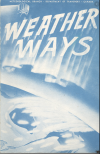HiloHawaiian
Well-Known Member
Agreed, I have 2 friends that love their OLED’s. Best of luck, I’m done with LG (except for their great washers & dryers, LOL).If your friend is seeing an LG TV for $450 it's an LCD. The OLED 55" is around $1500 and the 65" is $2100 as of today. The 77" is about $5000. Black Friday sales will save you a few more dollars. You should take a serious look... and don't pay too much attention to the hate that I'm about to reply to. Lemons can happen with any product. I can direct you to the AV forums I'm on with hundreds of people who stand by OLED and will echo the same statements I'm about to echo below.
I won't deny burn in can be an issue depending on the programming you watch but it's not a guarantee at all. Too many people think it is and that's just totally untrue. If you want to watch CNN all day like your old boss definitely DO NOT buy an OLED. That would be like buying a Ferrari as a grocery getter. Completely unnecessary. OLED is the best picture. Bar none. I own one and love it. But I also use mine in a home theater to watch 1080p and 4k UHD discs. I don't use mine to watch CNN 24/7 but for the record I have tuned into CNN and FOX News many many times and had experienced no ill effects.
If I was a 24/7 CNN junkie I'd have bought an LCD for $299 because those don't burn in no matter how long the ticker is on the screen.
As for your TV... it sounds like you just got unlucky. I've had my 65" B7 for 20 months... it has about 3600 hours on it and I haven't had a single problem. No burn in. No main board failure. No problems at all. Just a flawless picture that when paired with my Dolby Atmos sound system makes for an amazing home theater experience.
To each their own.
As for Home Theater, it’s really a total, systematic approach that makes it work, more than the TV. The room must be right. The lightning controlled. I find the dim LED’s stuck onto the back of the TV to be really good, like a movie theater. Audio and acoustics are so important. I’ve found there’s really no substitute for true 5.1/7.1 surround. Even the best $1000+ sound bars with wireless subs & satellites can’t compete with a good surround receiver, a massive sub, rear, and/or side speakers. We constantly get fooled by sounds behind us, thinking it’s somebody in the house.
It’s a royal pain to run wires all over a room, but there’s no reliable wireless solution for rear speakers (amazingly). I got a 15” Polk Audio sub on Craigslist, for $50 — it makes a world of difference over my old 10”.







